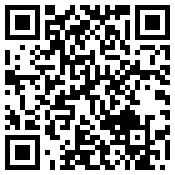PROBLEM STATEMENT
Many network related applications require fast identification of the shortest path between a pair of
nodes to optimize routing performance. Given a weighted graph ?(?, ?) consisting of a set of
vertices ? and a set of edges ?, we aim at finding the path in ? connecting the source vertex ?1
and the destination vertex ??, such that the total edge weight along the path is minimized.
Dijkstra Algorithm is a procedure of finding the shortest path between a source and destination
nodes. This algorithm will be discussed later in the semester. In this project, you will implement a
distributed system to compute shortest path based on client’s query. Suppose the system stores
maps of a city, and the client would like to obtain the shortest path and the corresponding
transmission delay between two points in the city. The figure below summarizes the system
architecture. The distributed system consists of three computation nodes: a main server (AWS),
connected to two backend servers (Server A and Server B). On the backend server A, there is a
file named map.txt storing the map information of the city. The AWS server interfaces with the
client to receive his query and to return the computed answer. The backend servers, A and B,
perform the actual shortest path and transmission delay computation based on the message
forwarded by AWS server.
Detailed computation and communication steps performed by the system is listed below:
1. [Communication] Client -> AWS: client sends the map ID, the source node in the map and the
transmission file size (unit: bit) to AWS via TCP.
2. [Communication] AWS -> ServerA: AWS forwards the map ID and source node to serverA
via UDP.
3. [Computation] ServerA reads map information from map.txt, uses Dijkstra to find the shortest
path from input source to all the other nodes and print them out in a pre-defined format.
4. [Communication] ServerA -> AWS: ServerA sends the outputs of Dijkstra to AWS.
5
5. [Communication] AWS -> ServerB: AWS sends to ServerB the file size as well as the outputs
of ServerA.
6. [Computation] ServerB calculates the transmission delay, propagation delay and end to end
delay for each path.
7. [Communication] ServerB -> AWS: ServerB sends the calculated delay values to AWS.
8. [Communication] AWS -> client: AWS sends to client the shortest path and delay results, and
client prints the final results.
The map information of the city is stored in a file named map.txt, stored in ServerA. The map.txt
file contains information of multiple maps (i.e. graphs), where each map can be considered as a
community of the city. Within each map, the edge and vertex information are further specified,
where an edge represents a communication link. We assume edges belonging to the same map
have identical propagation speed and transmission speed.
The format of map.txt is defined as follows:
Example:
A
10
10
0 1 10
0 2 15
1 2 20
B
20
10
0 1 25
0 2 15
1 3 20
…
other end>
… (Specification for other edges)
…
10
A
0
1
2
15
20
20
B
0
1
2
15
3
25
6
Note:
1. For each map, number of vertices is between 1 and 10
2. We consider undirected, simple graphs:
a. There are no repeated edges or self-loops
b. An edge (p,q) in the graph means p and q are mutual neighbors
3. Units:
a. Propagation speed: km/s
b. Transmission speed: Bytes/s
c. Distance: km
We provide a sample map.txt for you as a reference. We will use another map.txt for grading, so
you are advised to prepare your own map files for testing purposes.
Source Code Files
Your implementation should include the source code files described below, for each component
of the system.
1. AWS: The server can be viewed as a much simplified Amazon Web Service server. You must
name your code file: aws.c or aws.cc or aws.cpp (all small letters). Also you must name the
corresponding header file (if you have one; it is not mandatory) aws.h (all small letters).
2. Backend-Server A and B: You must use one of these names for this piece of code: server#.c
or server#.cc or server#.cpp (all small letters except for #). Also you must name the
corresponding header file (if you have one; it is not mandatory) server#.h (all small letters,
except for #). The “#” character must be replaced by the server identifier (i.e. A or B).
3. Client: The name for this piece of code must be client.c or client.cc or client.cpp (all small
letters) and the header file (if you have one; it is not mandatory) must be called client.h (all
small letters).
Note: Your compilation should generate separate executable files for each of the components listed
above.
7
DETAILED EXPLANATION
Phase 1 (10 points)
Boot up: 5 points
Client -> AWS: 5 points
All three server programs (AWS, Back-end Server A & B) boot up in this phase. While booting
up, the servers must display a boot up message on the terminal. The format of the boot up message
for each server is given in the onscreen message tables at the end of the document. As the boot up
message indicates, each server must listen on the appropriate port for incoming
packets/connections.
once the server programs have booted up, the client program runs. The client displays a boot up
message as indicated in the onscreen messages table. Note that the client code takes input
arguments from the command line. The format for running the client code is:
(Between two input arguments, there should be a space)
For example, if the client wants to calculate the end to end delay of each shortest path from source
vertex 1 to any other vertices in Map A, with file size of 10 bits, then the command should be:
After booting up, the client establishes TCP connections with AWS. After successfully
establishing the connection, the client sends the input (map ID, source vertex index and file size)
to AWS. once this is sent, the client should print a message in a specific format. This ends Phase
1 and we now proceed to Phase 2.
./client
./client A 1 10
8
Phase 2 (40 points+20 points)
In Phase 1, you read the input arguments from the client and send them to the AWS server over a
TCP connection. Now in phase 2, this AWS server will send selected input value(s) to the backserver
A and B, depending on their functionalities.
The communication between the AWS server and both the backend servers is via UDP. The port
numbers used by servers A and B are specified in Table 3. Since both the servers will run on the
same machine in our project, both have the same IP address (the IP address of localhost is usually
127.0.0.1).
In Phase 2A, {map construction} operation will be implemented. In Phase 2B, the {path finding}
operation will be implemented. In Phase 2C, the {calculation} operation will be implemented (see
Table. 2).
Note that all messages required to be printed for the client, AWS server and backend server A, B
can be found in the format given in the ON SCREEN MESSAGES table. You can also check the
example output in the following part for reference. Please try your best to follow the exact format
when you print out the result.
You are not required to have exact named functions (map construction, path finding, and
calculation) in your code. These operation is named and divided to make the process clear. And
as shown in the instruction, Phase 2A and 2B will together contribute to 40 points when your
project is graded.
Phase 2A (2A + 2B = 40 points)
Phase 2A begins when the backend server A boots up. Afterwards, server A will execute the {map
construction} operation and read the map data file (map.txt, see the problem statement section).
Reading this file will allow A to construct a list of maps. Every map will be identified by its unique
ID. After Phase 2A, backend server A will keep this list so that the client can query on any map in
this list. AWS will then wait for appropriate user input to let server A perform the {path finding}
operation.
Phase 2B (2A + 2B = 40 points)
Phase 2B is initiated when AWS receives all required data from the client. The AWS will forward
the,from the client to backend server A. Backend server A will have
a list of maps in its memory upon finishing Phase 2A. After the backend server A receives the two
parameters, it will perform {path finding} operation (see Table. 2) by Dijkstra algorithm to find
the shortest path from theto all other node in the same map.
once finished, the server A will print out a table to demonstrate the minimum length found. The
table will include 2 columns (see an example output table in the “ON SCREEN MESSAGES”
table). The first column will be the destination node index, the second column will be the minimum
length from start node to the destination. Please format your output so the table is clear and
9
readable. Then server A will send all required map information back to AWS.
Phase 2C (20 points)
Phase 2C starts when the AWS receives the corresponding map information from server A. The
AWS server will forward both the result and theto backend server B.
The backend server B is a computing server. It performs the operation {calculation} (see Table 2)
based on the data sent by the AWS server (please think carefully on your own what information is
necessary from AWS, to enable B to complete the calculation). With the given, the
backend server B will compute the delay for the start node to send the file to all other node. The
server B will compute both ?????? and ?????. The final step for Phase 2C is sending 3 delay results
(??????, ?????, end to end delay) back to AWS server.
Table 2. Server Operations
Map Construction
In this operation, you will read the data file (map.txt) to construct a
list of maps (i.e., graphs). For each map, you will book-keep the
edge information including length, propagation speed and bit rate.
Path Finding
In this operation, you will find the path of minimum length from a
given start vertex to all other vertices in the selected map, using
Dijkstra algorithm. You also need to print out a simple 2-columns
table to show the result.
Calculation
In this operation, you compute the transmission delay (in ms), the
propagation delay (in ms), and the end-to-end delay (in ms) for
transmitting a file of given size in the selected map.
10
Phase 3 (15 points)
At the end of Phase 2C, backend server B should have the calculation results ready. Those results
should be sent back to the AWS using UDP. When the AWS receives the calculation results, it
needs to forward all the result to the client using TCP. The results should include minimum path
length to all destination node and 3 delays to transfer the file to corresponding destinations. The
clients will print out a table to display the response. The table should include 5 columns. One for
destination node index, one for path length and the other three for delays.
Make sure you round the results of three delay time to the 2nd decimal point for display. Round the
result after summing ?????? and ????? along a path. Do not sum rounded ?????? and rounded
????? as your total delay.
See the ON SCREEN MESSAGES table for an example output table.
11
PORT NUMBER ALLOCATION
The ports to be used by the client and the servers are specified in the following table:
Table 3. Static and Dynamic assignments for TCP and UDP ports
Process Dynamic Ports Static Ports
Backend-Server (A) - 1 UDP, 21xxx
Backend-Server (B) - 1 UDP, 22xxx
AWS - 1 UDP, 23xxx
1 TCP with client, 24xxx
Client 1 TCP
NOTE: xxx is the last 3 digits of your USC ID. For example, if the last 3 digits of your USC ID
are “319”, you should use the port: 21319 for the Backend-Server (A), etc.
12
ON SCREEN MESSAGES
Table 4. Backend-Server A on screen messages
Event On Screen Message
Booting up (only while
starting):
The Server A is up and running using UDP on
port.
For map construction, after
constructing the list of maps
The Server A has constructed a list of
maps:
-------------------------------------------
Map ID Num Vertices Num Edges
-------------------------------------------
A 9 15
B 7 25
…
-------------------------------------------
For path finding,
upon receiving the input query:
The Server A has received input for finding
shortest paths: starting vertexof map
.
For path finding,
after finishing Dijkstra:
The Server A has identified the following
shortest paths:
-----------------------------
Destination Min Length
-----------------------------
1 1 10
2 20
7 21
…
-----------------------------
For path finding,
after sending to AWS:
The Server A has sent shortest paths to AWS.
13
Table 5. Backend-Server B on screen messages
Event On Screen Message
Booting up (only while
starting):
The Server B is up and running using UDP on
port.
For calculation, after receiving
data from AWS:
The Server B has received data for calculation:
* Propagation speed:km/s;
* Transmission speedBytes/s;
* Path length for destination:
* Path length for destination:
* …
After calculation:
The Server B has finished the calculation of
the delays:
------------------------
Destination Delay
------------------------
1 0.30
2 0.35
7 0.33
…
------------------------
After sending the results to the AWS
server:
The Server B has finished sending the output to
AWS
14
Table 6. AWS on screen messages
Event On Screen Message
Booting up (only while
starting): The AWS is up and running.
Upon Receiving the input
from the client:
The AWS has received map ID, start
vertexand file sizefrom
the client using TCP over port
After sending information to
server A
The AWS has sent map ID and starting vertex to
server A using UDP over port”
After receiving results from
server A
The AWS has received shortest path from server A:
-----------------------------
Destination Min Length
-----------------------------
1 1 10
2 2 20
7 21
…
-----------------------------
After sending information to
server B
The AWS has sent path length, propagation speed
and transmission speed to server B using UDP over
port.
After receiving results from
server B
The AWS has received delays from server B:
--------------------------------------------
Destination Tt Tp Delay
--------------------------------------------
1 0.10 0.10 0.20
2 0.10 0.20 0.30
7 0.10 0.21 0.31
…
--------------------------------------------
After sending results to
client
The AWS has sent calculated delay to client using
TCP over port.
15
Table 7. Client on screen messages
Event On Screen Message
Booting Up: The client is up and running.
After sending query to AWS
The client has sent query to AWS using TCP over
port: start vertex;
map; file size.
After receiving output
from AWS
The client has received results from AWS:
----------------------------------------------
Destination Min Length Tt Tp Delay
----------------------------------------------
1 10 0.10 0.10 0.20
2 20 0.10 0.20 0.30
7 21 0.10 0.21 0.31
…
----------------------------------------------
16
ASSUMPTIONS
1. You have to start the processes in this order: backend-server (A), backend-server (B), AWS,
and Client.
2. The map.txt file is created before your program starts.
3. Client always sends valid queries. In other words, the map ID corresponds to existing maps,
and start vertex is an existing vertex in the map.
4. If you need to have more code files than the ones that are mentioned here, please use
meaningful names and all small letters and mention them all in your README file.
5. You are allowed to use code snippets from Beej’s socket programming tutorial (Beej’s guide
to network programming) in your project. However, you need to mark the copied part in your
code.
6. When you run your code, if you get the message “port already in use” or “address already in
use”, please first check to see if you have a zombie process (see following). If you do not
have such zombie processes or if you still get this message after terminating all zombie
processes, try changing the static UDP or TCP port number corresponding to this error message
(all port numbers below 1024 are reserved and must not be used). If you have to change the
port number, please do mention it in your README file and provide reasons for it.
7. You may create zombie processes while testing your codes, please make sure you kill them
every time you want to run your code. To see a list of all zombie processes, try this command:
Identify the zombie processes and their process number and kill themby typing atthe commandline:
ps –aux | grep ee450
kill -9
17
REQUIREMENTS
1. Do not hardcode the TCP or UDP port numbers that are to be obtained dynamically. Refer to
Table 3 to see which ports are statically defined and which ones are dynamically assigned. Use
getsockname() function to retrieve the locally-bound port number wherever ports are assigned
dynamically as shown below:
2. The host name must be hardcoded as localhost (127.0.0.1) in all codes.
3. Your client should terminate itself after all done. And the client can run multiple times to send
requests. However, the backend servers and the AWS should keep running and be waiting for
another request until the TAs terminate them by Ctrl+C. It they terminate before that, you will
lose some points for it.
4. All the naming conventions and the on-screen messages must conform to the previously
mentioned rules.
5. You are not allowed to pass any parameter or value or string or character as a command-line
argument except while running the client in Phase 1.
6. All the on-screen messages must conform exactly to the project description. You should not
add anymore on-screen messages. If you need to do so for the debugging purposes, you must
comment out all of the extra messages before you submit your project.
7. Please do remember to close the socket and tear down the connection once you are done using
that socket.
Programming Platform and Environment
1. All your submitted code MUST work well on the provided virtual machine Ubuntu.
2. All submissions will only be graded on the provided Ubuntu. TAs won’t make any updates or
changes to the virtual machine. It’s your responsibility to make sure your code working well
on the provided Ubuntu. “It works well on my machine” is not an excuse and we don’t care.
3. Your submission MUST have a Makefile. Please follow the requirements in the following
“Submission Rules” section.
getsock_check=getsockname(TCP_Connect_Sock,(struct sockaddr
*)&my_addr, (socklen_t *)&addrlen);
//Error checking
if (getsock_check== -1) { perror("getsockname"); exit(1);
}
18
Programming Languages and Compilers
You must use only C/C++ on UNIX as well as UNIX Socket programming commands and
functions. Here are the pointers for Beej's Guide to C Programming and Network Programming
(socket programming):
http://www.beej.us/guide/bgnet/
(If you are new to socket programming please do study this tutorial carefully as soon as possible
and before starting the project)
http://www.beej.us/guide/bgc/
You can use a Unix text editor like emacs to type your code and then use compilers such as g++
(for C++) and gcc (for C) that are already installed on Ubuntu to compile your code. You must use
the following commands and switches to compile yourfile.c or yourfile.cpp. It will make an
executable by the name of "yourfileoutput”.
Do NOT forget the mandatory naming conventions mentioned before!
Also inside your code you may need to include these header files in addition to any other header
file you used:
Submission Rules
Along with your code files, include a README file and a Makefile. In the README file write:
x Your Full Name as given in the class list
x Your Student ID
x What you have done in the assignment.
x What your code files are and what each one of them does. (Please do not repeat the
project description, just name your code files and briefly mention what they do).
x The format of all the messages exchanged.
x Any idiosyncrasy of your project. It should say under what conditions the project fails,
if any.
gcc -o yourfileoutput yourfile.c
g++ -o yourfileoutput yourfile.cpp
#include
#include
#include
19
x Reused Code: Did you use code from anywhere for your project? If not, say so. If so,
say what functions and where they're from. (Also identify this with a comment in the
source code.)
SUBMISSIONS WITHOUT README AND MAKEFILE WILL BE SUBJECT TO A
SERIOUS PENALTY.
about the Makefile
Makefile Tutorial:
https://www.cs.swarthmore.edu/~newhall/unixhelp/howto_makefiles.html
Makefile should support following functions:
Compiles all your files
and creates executables make all
Runs server A make serverA
Runs server B make serverB
Runs AWS make aws
Query the AWS ./client
Size>
TAs will first compile all codes using make all. They will then open 4 different terminal windows.
On 3 terminals they will start servers A, B and AWS using commands make serverA, make
serverB, and make aws. Remember that servers should always be on once started. Client can
connect again and again with different input query arguments. On the 4th terminal they will start
the client as “./client". TAs will check the outputs
for multiple queries. The terminals should display the messages specified above.
1. Compress all your files including the README file into a single “tar ball” and call it:
ee450_yourUSCusername_session#.tar.gz (all small letters) e.g. my filename would be
ee450_nanantha_session1.tar.gz. Please make sure that your name matches the one in the
class list. Here are the instructions:
On your VM, go to the directory which has all your project files. Remove all executable and
other unnecessary files. only include the required source code files, Makefile and the
README file. Now run the following commands:
Now, you will find a file named “ee450_yourUSCusername_session#.tar.gz” in the same
directory. Please notice there is a star (*) at the end of first command.
tar cvf ee450_yourUSCusername_session#.tar *
gzip ee450_yourUSCusername_session#.tar
20
2. Do NOT include anything not required in your tar.gz file. Do NOT use subfolders. Any
compressed format other than .tar.gz will NOT be graded!
3. Upload “ee450_yourUSCusername_session#.tar.gz” to the Digital Dropbox on the DEN
website (DEN -> EE450 -> My Tools -> Assignments -> Socket Project). After the file is
uploaded to the drop box, you must click on the “send” button to actually submit it. If you do
not click on “send”, the file will not be submitted.
4. D2L will and keep a history of all your submissions. If you make multiple submission, we will
grade your latest valid submission. Submission after deadline is considered as invalid.
5. D2L will send you a “Dropbox submission receipt” to confirm your submission. So please do
check your emails to make sure your submission is successfully received. If you don’t receive
a confirmation email, try again later and contact your TA if it always fails.
6. Please take into account all kinds of possible technical issues and do expect a huge traffic on
the DEN website very close to the deadline which may render your submission or even access
to DEN unsuccessful.
7. Please DO NOT wait till the last 5 minutes to upload and submit because some technical issues
might happen and you will miss the deadline. And a kind suggestion, if you still get some bugs
one hour before the deadline, please make a submission first to make sure you will get some
points for your hard work!
8. After receiving the confirmation email, please confirm your submission by downloading and
compiling it on your machine. If the outcome is not what you expected, try to resubmit and
confirm again. We will only grade what you submitted even though it’s corrupted.
9. You have plenty of time to work on this project and submit it in time hence there is
absolutely zero tolerance for late submissions! Do NOT assume that there will be a late
submission penalty or a grace period. If you submit your project late (no matter for what
reason or excuse or even technical issues), you simply receive a zero for the project.
21
GRADING CRITERIA
Notice: We will only grade what is already done by the program instead of what will be done.
For example, the TCP connection is established and data is sent to the AWS. But result is not
received by the client because the AWS got some errors. Then you will lose some points for phase
1 even though it might work well.
Your project grade will depend on the following:
1. Correct functionality, i.e. how well your programs fulfill the requirements of the assignment,
especially the communications through UDP and TCP sockets.
2. Inline comments in your code. This is important as this will help in understanding what you
have done.
3. Whether your programs work as you say they would in the README file.
4. Whether your programs print out the appropriate error messages and results.
5. If your submitted codes do not even compile, you will receive 5 out of 100 for the project.
6. If your submitted codes compile using make but when executed, produce runtime errors
without performing any tasks of the project, you will receive 10 out of 100.
7. If you forget to include the README file or Makefile in the project tar-ball that you submitted,
you will lose 15 points for each missing file (plus you need to send the file to the TA in order
for your project to be graded.)
8. If your code does not correctly assign the TCP or UDP port numbers (in any phase), you will
lose 10 points each.
9. You will lose 5 points for each error or a task that is not done correctly.
10. The minimum grade for an on-time submitted project is 10 out of 100, assuming there are no
compilation errors and the submission includes a working Makefile and a README.
11. There are no points for the effort or the time you spend working on the project or reading the
tutorial. If you spend about 2 months on this project and it doesn’t even compile, you will
receive only 5 out of 100.
12. You must discuss all project related issues on Piazza. We will give those who actively help
others out by answering questions on Piazza up to 10 bonus points. If you want to earn the
extra credits, do remember to leave your names visible to instructors when answering questions
on Piazza. Also, you will NOT get credit by repeating others’ answers.
13. The maximum points that you can receive for the project with the bonus points is 100. In other
22
words the bonus points will only improve your grade if your grade is less than 100.
14. Your code will not be altered in any ways for grading purposes and however it will be tested
with different inputs. Your designated TA runs your project as is, according to the project
description and your README file and then check whether it works correctly or not. If your
README is not consistent with the description, we will follow the description.
23
FINAL WORDS
1. Start on this project early. Hard deadline is strictly enforced. No grace periods. No grace days.
No exceptions.
2. In view of what is a recurring complaint near the end of a project, we want to make it clear
that the target platform on which the project is supposed to run is the provided Ubuntu (16.04).
It is strongly recommended that students develop their code on this virtual machine. In case
students wish to develop their programs on their personal machines, possibly running other
operating systems, they are expected to deal with technical and incompatibility issues (on their
own) to ensure that the final project compiles and runs on the requested virtual machine. If you
do development on your own machine, please leave at least three days to make it work on
Ubuntu. It might take much longer than you expect because of some incompatibility issues.
3. Check Piazza regularly for additional requirements and latest updates about the project
guidelines. Any project changes announced on Piazza are final and overwrites the respective
description mentioned in this document.
4. Plagiarism will not be tolerated and will result in an “F” in the course.
因为专业,所以值得信赖。如有需要,请加QQ:99515681或邮箱:99515681@qq.com
微信:codehelp










